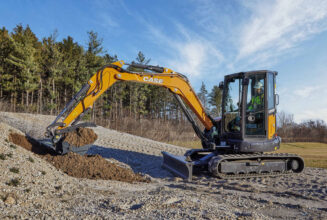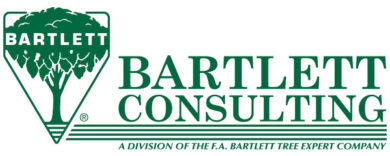Spray Park Water Treatment System Design
By Del Williams
For hands-on family fun and imaginative heat relief, spray parks are catching on in communities around the world. As the question changes from “Should we construct a spray park?” to “What’s the best design for our spray park?” professionals such as landscape architects, parks and recreation managers, and aquatic designers are recognizing the need for collaboration.
What’s emerging is a focus on better design from concept through operation, maintenance, and paying the water bill. Of particular concern are water conservation and safety, with an emphasis on better water treatment system design.
Landscape architects
The increase in collaborative efforts between project parties and equipment manufacturers becomes ever more important to ensure that the vision, design and regulatory standards are achieved.Like other proactive landscape architecture firms, Scatliff, Miller, and Murray, Winnipeg, Canada, is a proponent of water conservation, which it incorporates into its design vision. Water safety and visual impact, along with practical, budget-oriented implementation round out its spray park goals on appropriate projects.
“As landscape architects, our bias is to stewardship of the land and its resources, including clean water, which is getting scarcer,” said Bob Somers, an associate landscape architect at Scatliff, Miller, and Murray. “Like many communities, as we balance the need for a spray park in a hot summer climate with responsible water use, we’re turning from flow-to-drain to recirculation systems.”
Along with this, Somers expects stronger health and safety standards in the spray park and interactive fountain markets as they grow` and mature. And weaving a complementary sense of design throughout a project is critical as well.
“From a visual design perspective, our goal is to integrate the spray park or fountain into the landscape, to make them a destination whether the water is on or off,” said Somers.
“To ease the design process, having a full range of water source and treatment options available is key,” added Somers. “Having technical expertise at hand is necessary as well.”
Scatliff, Miller, and Murray projects show how its water conservation, health, and visual design goals can easily work together. Its Central Park project will create a 5-acre destination playground for an urban Winnipeg community with a 6,500-square-foot spray park, soccer field, sledding hill, and other amenities.
To conserve water in the spray park, a combination of high- and low-flow spray nozzles will be used, along with a state-of-the-art water treatment, recirculation system provided by Waterplay Solutions Corp., a spray park and water treatment system provider based in Kelowna, Canada.
Sand filtration, chlorine use, and ultra-violet treatment to kill bacteria greatly enhance the safety and cleanliness of the recirculated water. While filtration and chlorine are commonly used to sanitize swimming pools, high-intensity, ultra-violet treatment is an even more effective level of protection from potential pathogens in recirculated water.
To integrate the architecture with the landscape, the water treatment system, including a recirculated water cistern, is located in a building basement with no obstructive structures aboveground.
Among the visual attractions of the spray park will be a waterfall cascading off a cement canopy into a wading pool, plus several fully interactive spray features.
“As we put together ideas of what the spray park will look like, of what the water will do, of how we will incorporate water conservation, Waterplay is helping us realize our vision while staying on budget,” said Somers.
Parks & Recreation Departments
In drought-affected Southern California, the County of San Diego Department of Parks & Recreation (DPR) envisioned a nautical-themed interactive spray park open to its diverse communities. Water conservation, water safety, and play value had to be key parts of its design. The result: an award-winning aquatic playground that saves more than 500,000 gallons of potable water annually.
Before October 2008, there were no admission-free, recirculating aquatic playgrounds in San Diego County, Calif. where children and their families could escape triple-digit temperatures. The only other facility of this kind in Southern California was in a neighboring community, fee-based, and non-recirculating — making spray park, aquatic recreation costly and inaccessible to much of the county’s population.
For hands-on family fun and imaginative heat relief, spray parks are catching on in communities around the world.In a partnership between DPR and a local advisory group, the first admission-free, recirculating public aquatic playground was constructed at Hilton Head Park.
“The goal was to build a facility that would be a model for water conservation, energy efficiency, fun and safety,” said Brad Roberts, lead project manager for DPR’s Hilton Head Park, phase 2, improvement project. “Waterplay was involved from design through construction, and was the vendor of choice for all spray features and the water treatment system.”
The company added the necessary water features to make the aquatic playground’s nautical theme come alive. Ground sprays were placed directly over the blowholes of a killer whale and dolphins, a circular spray was added to mimic the arms of an octopus, and a water cannon was added to protect the buried treasure on Pirate’s Cove Island.
Control of the water features was put into the children’s hands via an activator at the aquatic playground. The water features run in a 7-minute sequence when someone touches the activator. This means the aquatic playground only operates when children actually play in the spray park, rather than running continuously during published hours.
The result is less water evaporation, power usage and unused water drainage.
The aquatic playground also uses a recirculating water treatment system that provides broad-spectrum, chlorinated, ultraviolet disinfection, killing bacteria such as cryptosporidium and E. coli.
“We realized the new water treatment system would not only conserve water, but also save taxpayer dollars spent on potable water that would otherwise be lost to the sewer system,” said Roberts.
“Due to drought, water rationing is looming in Southern California,” said Roberts. “We wouldn’t have been able to operate the aquatic playground with a conventional drain-to-sewer system. With the new water treatment system, we’ll achieve quick payback by saving an estimated 527,000 gallons of potable water annually.”
The Hilton Head Park aquatic playground received a 2008 Award of Excellence from the California Parks and Recreation Society (CPRS) and a San Diego Excellence in Energy (SANDEE) Award for Outstanding Organizational Achievement in Energy from the Center for Sustainable Energy. Its success has even prompted other organizations to inquire about the design and construction of the project in order to replicate its features, said Roberts.
Aquatic Designers
To integrate the architecture with the landscape, the water treatment system, including a recirculated water cistern, is located in a building basement with no obstructive structures above ground.Since Aquatic Facility Design, a Millersburg, Pa.-based aquatic facility designer, deals with clients ranging from municipalities to resorts and swim clubs, it needs the full range of water source and treatment options available for spray parks, said Jacinda Tuesing, a lead designer and project manager for the company.
“We need all the available water options for a spray park since we never know what clients will require,” said Tuesing. “For a limited spray feature in a small community, potable drain-to-waste water disposal might work. For a resort with golf course, retain and reuse irrigation might be fine. But most of the time, a treated water system will be the best, most ecological, economical fit for the long-term.”
And because each client application is different, a vendor with the flexibility to modify spray park features and water treatment systems can be helpful.
“One park pool complex wanted to use a water recirculation and treatment system, but had no room for the equipment,” said Tuesing. “Waterplay offered to put the water treatment system in a below grade vault, accessible through hatches that blended in with the park. The solution worked. Nothing above ground blocked the view, the pool or the park. They also customize spray features for us when we need something of a different size or aesthetics.”
Del Williams is a technical writer based in Torrance, California.
Waterplay Solutions Corp., Kelowna, Canada, also offers an online spray park builder that allows users to design their own spray park with choice of venue and components. For more info, visit www.waterplay.com, e-mail info@waterplay.com or call 250-712-3393.



